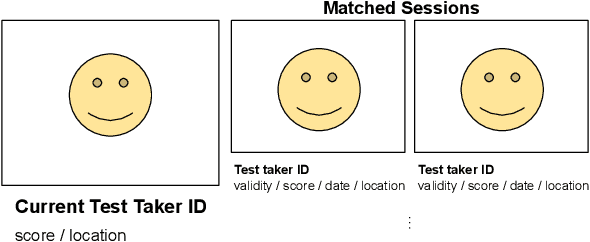Ruidong Liu
Human-in-the-Loop AI for Cheating Ring Detection
Mar 18, 2024


Abstract:Online exams have become popular in recent years due to their accessibility. However, some concerns have been raised about the security of the online exams, particularly in the context of professional cheating services aiding malicious test takers in passing exams, forming so-called "cheating rings". In this paper, we introduce a human-in-the-loop AI cheating ring detection system designed to detect and deter these cheating rings. We outline the underlying logic of this human-in-the-loop AI system, exploring its design principles tailored to achieve its objectives of detecting cheaters. Moreover, we illustrate the methodologies used to evaluate its performance and fairness, aiming to mitigate the unintended risks associated with the AI system. The design and development of the system adhere to Responsible AI (RAI) standards, ensuring that ethical considerations are integrated throughout the entire development process.
Fast Stability Scanning for Future Grid Scenario Analysis
Dec 14, 2016



Abstract:Future grid scenario analysis requires a major departure from conventional power system planning, where only a handful of most critical conditions is typically analyzed. To capture the inter-seasonal variations in renewable generation of a future grid scenario necessitates the use of computationally intensive time-series analysis. In this paper, we propose a planning framework for fast stability scanning of future grid scenarios using a novel feature selection algorithm and a novel self-adaptive PSO-k-means clustering algorithm. To achieve the computational speed-up, the stability analysis is performed only on small number of representative cluster centroids instead of on the full set of operating conditions. As a case study, we perform small-signal stability and steady-state voltage stability scanning of a simplified model of the Australian National Electricity Market with significant penetration of renewable generation. The simulation results show the effectiveness of the proposed approach. Compared to an exhaustive time series scanning, the proposed framework reduced the computational burden up to ten times, with an acceptable level of accuracy.
 Add to Chrome
Add to Chrome Add to Firefox
Add to Firefox Add to Edge
Add to Edge